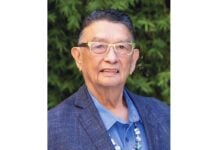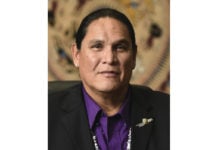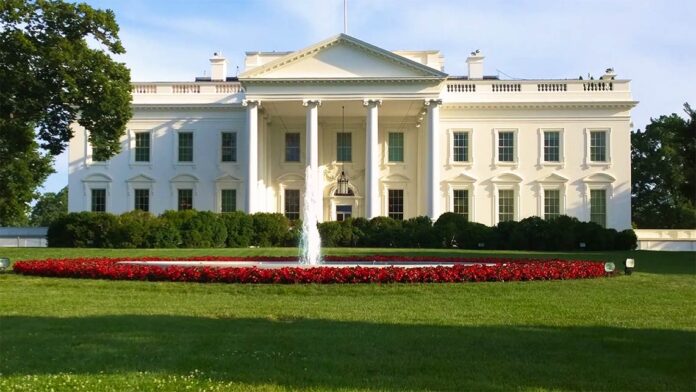WASHINGTON, D.C. – Secretary Deb Haaland applauded the 400 co-stewardship agreements signed by the Biden-Harris administration with tribes, Alaska Native corporations and consortiums in remarks at the 2024 White House Tribal Nations Summit. The annual event, re-initiated by President Biden, provides an opportunity for administration and tribal leaders from the 574 federally recognized tribes to discuss ways the federal government can invest in and strengthen nation-to-nation relationships, as well as ensure that progress in Indian Country endures for years to come.
The Interior Department released its third annual report on tribal co-stewardship, which outlines implementation of Joint Secretary’s Order 3403 (S.O. 3403) and highlights 69 new agreements that the Department entered into in the past year.
S.O. 3403 was signed at the 2021 Summit by Secretary Haaland and Secretary of Agriculture Tom Vilsack, committing the agencies to tribal and federal co-stewardship of federal lands, waters and wildlife, including through collaborative and cooperative agreements with tribal nations. Secretary of Commerce Gina Raimondo signed the Commerce Department on as party to S.O. 3403 during the 2022 Summit.
“Since time immemorial, ancestral homelands have been central to the social, cultural, spiritual, mental and physical well-being of Indigenous peoples,” said Secretary Haaland. “Through this unprecedented amount of co-stewardship agreements, the Biden-Harris administration is demonstrating our commitment to acknowledge and empower tribes as partners in the management of our nation’s lands and waters. These agreements have become foundational to our work and will be critical as we build our collective capacity, knowledge and expertise to develop and implement collaborative agreements for meaningful co-stewardship of our public resources.”
In 2022, the Department of the Interior published a report on current land, water, and wildlife treaty responsibilities and authorities that can support co-stewardship and tribal stewardship, ranging from bureau-specific statutes and regulations to authorities that apply Department-wide, to doctrines and authorities that are relevant to all federal agencies.
The Interior Department is responsible for the management of millions of acres of federal lands and waters that contain cultural and natural resources of significance and value to Indigenous peoples, including sacred religious sites, burial sites, wildlife and its habitat, and sources of Indigenous foods and medicines. In addition, many of those lands and waters lie within areas where tribes have the reserved right to hunt, fish, gather plants, and pray pursuant to ratified treaties and other long-standing legal agreements with the United States.
This year’s co-stewardship agreements and related efforts help convey the breadth of the Department’s commitment to advancing meaningful co-stewardship of public lands and waters. Examples include:
- Cape Cod: Mashpee Wampanoag Tribe and the Bureau of Ocean Energy Management (Massachusetts): A cooperative agreement with the Mashpee Wampanoag Tribe provides capacity to the tribe to manage and analyze the requisite environmental information supplied by offshore wind energy developers. Moreover, this agreement facilitates development of proactive, best practices for the management of data and information concerning cultural and archaeological places important to the tribe, incorporates Indigenous knowledge and language into a model depicting the preservation potential of submerged ancient cultural landforms and associated archaeological resources, and facilitates work and collaboration to develop capacity for the active monitoring and documentation of offshore cultural and archaeological resources that may be impacted as a result of approved activities by the Bureau of Ocean Energy Management.
- Everglades and Biscayne National Parks: Miccosukee Tribe of Indians of Florida and the National Park Service (Florida): Through a co-stewardship agreement, the Everglades National Park, Biscayne National Park, and the Miccosukee Tribe of Indians of Florida have committed to engaging in joint and cooperative endeavors focused on the natural and cultural resources of mutual interest to the National Park Service and the tribe. The Biscayne National Park agreement acknowledges tribal citizens’ right to traditional fishing and gathering of palm fronds and medicinally significant plants within the park’s borders, subject to applicable laws, regulations, and policies. The Biscayne National Park agreement also addresses collaboration on fisheries management and vegetation restoration.
- Gravel to Gravel: Memorandum of Understanding between Alaska Natives and Interior Bureaus (Alaska): Through the Gravel to Gravel Keystone Initiative, the Department is investing funds made available through President Biden’s Bipartisan Infrastructure Law to support resilient ecosystems and communities in the Yukon, Kuskokwim and Norton Sound regions of Alaska region and make immediate investments to respond to the salmon crisis. This work resulted in a memorandum of understanding between Interior bureaus and the Association of Village Council Presidents, Council of Athabascan Tribal Governments, Kawerak Incorporated, Nome Eskimo Community, Native Village of Eagle, Tanana Chiefs Conference, Kuskokwim River Inter-Tribal Fish Commission, and the Yukon River Inter-Tribal Fish Commission.
- Caja del Rio Plateau: Pueblo of Tesuque, Forest Service, and Bureau of Land Management Memorandum of Understanding: Through an agreement signed in November, the Pueblo of Tesuque, the U.S. Forest Service, and the Bureau of Land Management are developing a collaborative program within the Caja del Rio Plateau in New Mexico. Through this framework, the pueblo and its federal partners will collaborate in natural resource management that maintains Pueblo cultural lifeways and works to ensure protection, preservation, and access to culturally significant pueblo sites within the boundaries of land managed by the Forest Service and Bureau of Land Management.
Under Secretary Haaland’s leadership, new guidance was issued to improve federal stewardship of public lands, waters and wildlife by strengthening the role of tribal governments in federal land management. The Department is committed to ensuring that decisions relating to co-stewardship will continue to advance safeguards for traditional subsistence, cultural practices, trust interests and treaty rights for tribes.














































